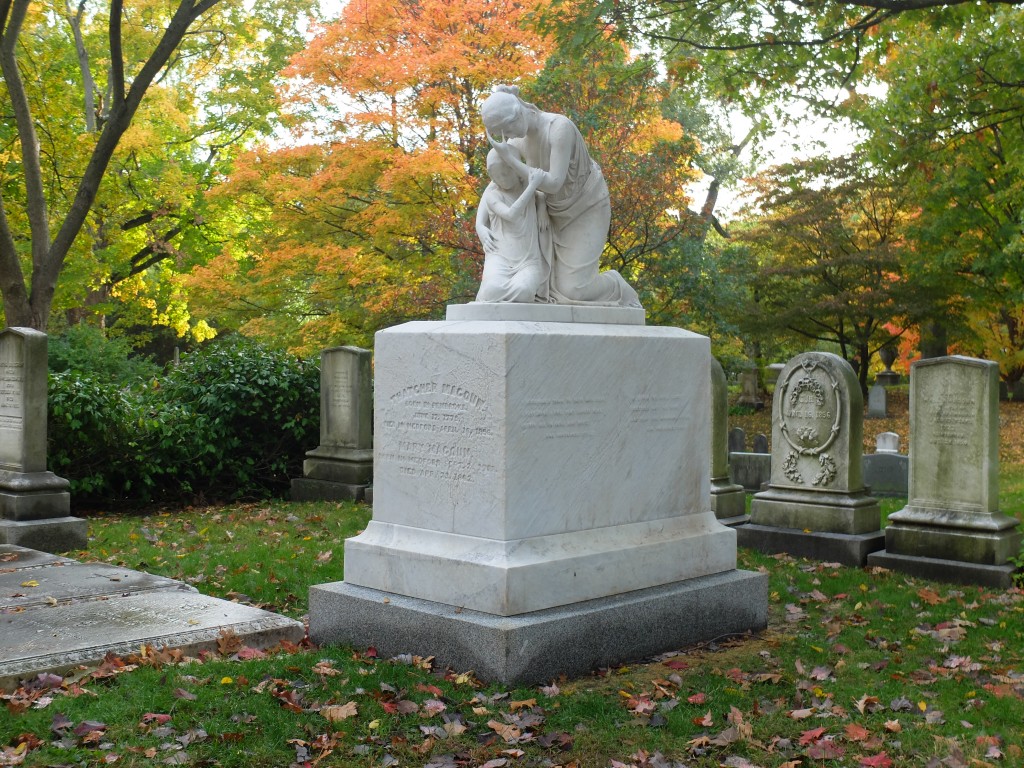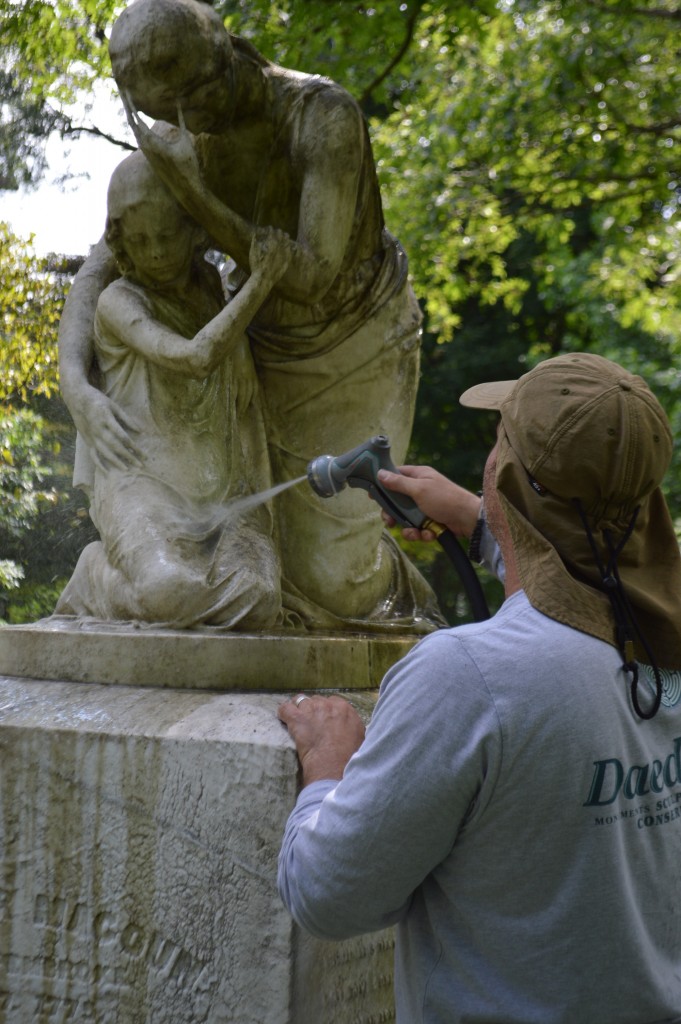Conservation in Action: Saving the Monument to Thatcher Magoun

Mount Auburn is delighted to announce the recent conservation of the much-loved monument to Thatcher Magoun (1775-1856) on Fir Avenue. Described in nineteenth-century guidebooks as “One of the most beautiful in the grounds,” the tender memorial depicts a female figure protectively embracing a young girl. Also referred to as “Grief,” the monument is a copy of a bas-relief carved by Irish-born sculptor John Henry Foley that was published in The Art Journal of 1850. The Art Journal observed “how closely and tenderly are the two entwined together, each finding comfort in the other; yet both sorrowing over the link that is broken.” The inscription “R. Barry, Boston” on the base references Richard Barry (c. 1818-1874), a Boston marble worker, who carved the memorial’s large pedestal.
The impressive marble monument is reflective of Magoun’s prominence during his time. In 1802, Thatcher Magoun established a thriving shipbuilding business in Medford, Massachusetts that supplied ships for the China trade, earning a reputation according to historian Samuel Eliot Morrison as “second to none among American shipbuilders.”[i] Thatcher’s son, Thatcher Magoun, Jr. joined his father’s business and became a well-known collector of art and statuary. In 1850, four relatives were reinterred in the newly purchased family lot at Mount Auburn. The inscribed verse on the 1851 memorial may allude to the uniting of the family members: “Household’s Tomb to Faith So Dear! A Part Have Gone, Part Linger here; United All in Love and Hope, One Household still!”

In September 2015, Daedalus Conservation performed conservation treatment on the soft nineteenth-century marble which had become severely weathered over time.
Because of its unique artistic quality and historic associations, the Magoun monument is part of Mount Auburn’s Significant Monument Collection. In August 2013, Mount Auburn was the first cemetery ever awarded a Museums for America collections stewardship grant from the Institute of Museum and Library Services (IMLS) to research, document, and catalogue 30 of our most significant monuments. The grant also provided for professional condition assessments and conservation treatment plans for each monument. Working in conjunction with the findings of this grant-supported project, the Friends of Mount Auburn has been raising funds to complete conservation of the monuments most urgently in need of treatment. The first conservation project that was completed as part of this initiative was the Binney monument in October 2014. The Magoun monument, which was urgently in need of conservation, was next on the priority list. Conservation of the Magoun monument was made possible by Mount Auburn’s Preservation Endowment Fund, established to honor the Cemetery’s President William C. Clendaniel on his retirement in 2008.
In September 2015, Daedalus Conservation performed conservation treatment on the soft nineteenth-century marble which had become severely weathered over time. The meticulous, careful treatment included gently washing the fragile stone surface, pointing open joints with a soft mortar, and filling in the numerous thin cracks. To clean the most fragile areas, the conservator used a portable laser to remove dirt and accretions. The entire monument was then treated with a chemical consolidant in order to strengthen the stone and minimize loss. In the years ahead, Mount Auburn’s experienced preservation staff will continue to monitor the memorial’s condition and, when needed, will continue to wash and stabilize the stone on a cyclical basis to ensure that this much-loved monument lasts as long as possible. “Visitors to Mount Auburn will once again be able to appreciate the powerful emotion and evocative carving of this beautiful work of art in the landscape,” exclaims Mount Auburn’s Curator of Historical Collections Meg L. Winslow.
[i] Samuel E. Morison. The Maritime History of Massachusetts, 1783-1860. Boston: Houghton Mifflin Co., 1921, p. 102-103.
Leave a Reply